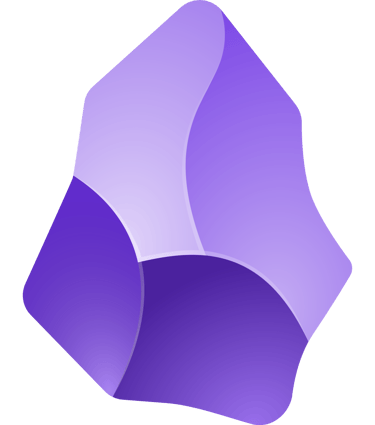Second Brain and Obsidian: Personal Knowledge Management in the Digital Era
In this article, we will explore the Second Brain methodology developed by Tiago Forte, analyze why Obsidian represents an ideal tool for building it, and examine concrete examples of how this approach can revolutionize the way we learn, create, and work.
FIRST PAGEDIGITAL CULTURE AND PHILOSOPHYINNOVATION AND EMERGING TECHNOLOGIES


Introduction
In the age of information, our minds are continually bombarded with an unstoppable flow of data, ideas, and content. How can we manage this abundance without feeling overwhelmed? How do we transform the mere collection of information into useful, actionable knowledge? The answer might lie in the concept of the "Second Brain" and digital tools designed to implement it, such as Obsidian.
In this article, we will explore the Second Brain methodology developed by Tiago Forte, analyze why Obsidian represents an ideal tool for building it, and examine concrete examples of how this approach can revolutionize the way we learn, create, and work.
The C.O.D.E. Method: The Four Pillars of a Second Brain
The Second Brain concept, popularized by Tiago Forte, involves creating an external and reliable system to capture, organize, and utilize important information. Central to this approach is the C.O.D.E. method, an acronym representing the four essential processes:
Capture – Selectively gathering the most relevant information: book quotes, meeting notes, personal ideas, interesting articles.
Organize – Structuring captured information for easy accessibility using Forte's PARA system (Projects, Areas, Resources, Archive).
Distill – Extracting the essence from collected information by summarizing key points, simplifying complex concepts, and connecting related ideas.
Express – Acting upon and sharing acquired knowledge, from writing articles and crafting strategies to delivering presentations.
A well-maintained Second Brain maximizes the value of information over time by concretizing ideas, revealing associations between concepts, incubating insights, and refining unique perspectives. By delegating these processes externally, our biological brains are freed for creative and strategic tasks, reducing stress and information overload. But how do we practically implement these principles? Here is where digital tools like Obsidian become invaluable.
Obsidian: An Ideal Tool for Your Digital Second Brain
Obsidian is an advanced note-taking application that has emerged as a favorite tool for Personal Knowledge Management. Its official slogan—"A second brain, for you, forever"—reflects its core philosophy: serving as a permanent personal repository of your thoughts and knowledge, designed to endure and adapt.
Unlike many cloud-based services, Obsidian operates on simple Markdown text files stored locally on your device, ensuring your data remains entirely yours without vendor lock-in. Highly customizable and extendable through community plugins and themes, Obsidian adapts seamlessly to your unique thought processes.
Key Features of Obsidian
Freeform Interlinked Notes
Obsidian allows users to create notes freely and interlink them through hyperlinks, promoting an organic, bottom-up organization where structure emerges naturally from the connections made.
Bidirectional Links and Backlinks
When you link Note A to Note B, Obsidian automatically generates a backlink in Note B pointing back to Note A. This feature, derived from the Zettelkasten method, facilitates non-linear exploration akin to human thought processes.
Graph View Visualization
The Graph View provides an interactive map of interconnected notes, visually representing ideas and revealing hidden patterns, clusters of topics, or isolated notes needing further exploration.
Extensibility Through Plugins
Obsidian's extensive ecosystem of plugins enhances capturing content (web clippers, voice notes, OCR scanners), organizing and distilling data (Dataview, advanced tagging), and expressing knowledge (export options, online publishing).
Practical Use Cases: Obsidian as a Personal Neural Network
Learning and Studying
Students and researchers leverage Obsidian to systematically connect course materials, notes, and references, enhancing comprehension and memory through associative learning.
Creativity and Personal Projects
Writers and artists utilize Obsidian to organize creative ideas, story worlds, character relationships, or conceptual inspirations, enabling a structured yet flexible creative process.
Personal Productivity and Knowledge Work
Professionals managing projects and continuous learning utilize Obsidian to track meetings, strategies, technical documentation, and historical project data, preventing information loss and enhancing reusability.
Extended Mind: Philosophical and Cultural Reflections
The adoption of a digital Second Brain like Obsidian raises philosophical questions about technology’s role in cognition. Externalizing thought through such tools reflects the Extended Mind theory, highlighting how external resources can become integral to cognitive processes. Over time, a Second Brain mirrors our evolving intellectual identity, enabling self-reflection and deeper understanding.
Concerns exist regarding potential cognitive atrophy from overreliance on external tools, yet experts suggest freeing the mind from rote memorization enhances higher cognitive functions.
Culturally, widespread adoption of Second Brain methodologies could foster interconnected knowledge networks, with individual digital brains contributing to collective intelligence.
Conclusion
Combining Tiago Forte’s methodology with Obsidian creates a powerful synergy between philosophical insights and technological innovation. Building a Second Brain transforms passive information consumption into active knowledge creation, offering strategic benefits and personal growth.
Ultimately, embracing Obsidian as a Second Brain doesn’t mean outsourcing intelligence to technology but enhancing it—creating a living, evolving knowledge system that empowers intellectual exploration and leaves a lasting legacy.
Bibliography:
Tiago Forte, Building a Second Brain.
Tiago Forte, Il tuo secondo cervello.
Obsidian – Documentation and Official Site.
Community Obsidian and Case Study.